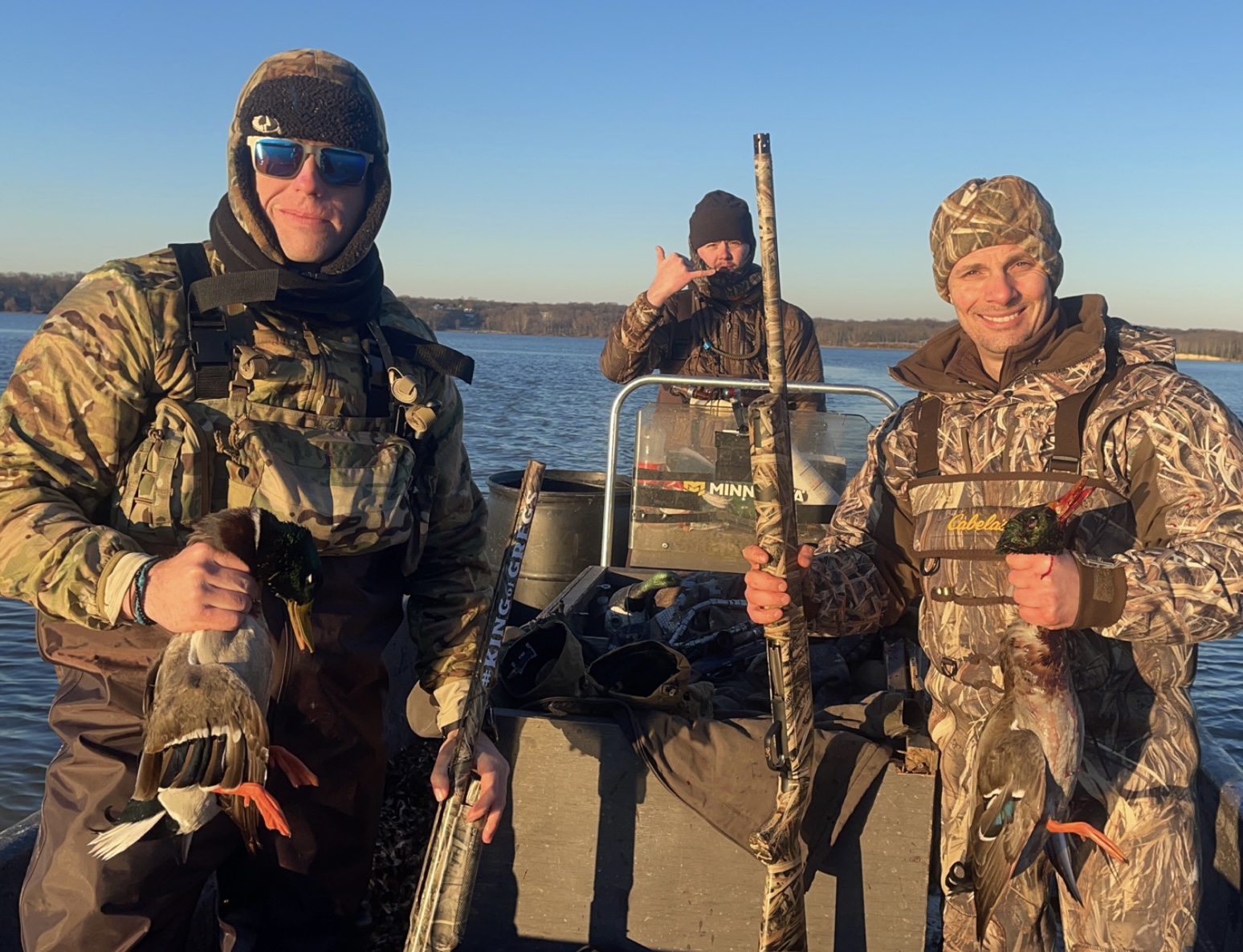For some it’s a destination hunt within state limits, for others it’s just another day in the season, but for me, it’s always a great time on the tidal Potomac River.
Many Virginians hunt inland, on swamps off their deer club lease for woodducks or grain fields for Canada geese. The closer you get to the coast is where you will find the river hunters. These hunting waterman pray for the harshest conditions knowing what the results could produce. Loading up their boats with long lines, scissor blinds and their trusty shotguns, you know the diver ducks are in trouble!
Hunting on the river can be complicated with Virginia’s regulations, especially with the abundance of stationary blinds lining the shores and scattered in the tributaries. And these aren’t public blinds. Most of them are owned by outfitters.
With so many blinds and laws in place one’s best chance for access is either booking a hunt with a guide service or using a boat blind to chase fowl.
If you go the boat route, your boat is considered a “floating blind,” and you will need to apply for a Floating Blind license. In Virginia, regulation states, “licenses for floating blinds shall be limited to two in any one season, to any one applicant.”
Now that you’ve got your license for your boat blind, you need to know the most important law in Virginia: where you can hunt on the river.
Different counties have different rules. For instance, in Fairfax, Prince William, and Stafford Counties, “floating blinds must be anchored and located no closer to another’s blind than 400 yards unless person has written permission of blind owner. Such blinds must be taken in at a half hour after sunset.”
But on other portions of the river, the law states as follows, “No person shall hunt or shoot migratory waterfowl in the public waters of this Commonwealth within 500 yards of any legally licensed erected stationary blind of another, whether occupied or not, without the written consent of the licensee, except when in active pursuit of a visible crippled waterfowl which was legally shot by the person.”
Years ago you could count the number of float hunters on the Potomac with one hand. Nowadays that number has multiplied considerably with the next generation of gunners now a part of the passion. I recommend a good range finder or distance app to avoid unnecessary violations.
The main stem of the Potomac river is governed by the state of Maryland, and follows a different set of rules, however the Virginia tributaries and bays are solely Virginia waters and regulations. It’s always a good idea to familiarize yourself with both states’ regulations prior to hunting the Potomac.
Another tip about making the most of your river hunt is to make sure you are positioned in the flight pattern for that day. You can do this by going with your gut and hoping for the best, or simply by waiting until first light to see what the birds are doing.
When it comes to concealment, some guys choose to hide under a store bought boat blind, while others may use a scissor blind ( boards fixed to the boat rails with holes pre drilled for pine tree branches). Occasionally you’ll find some hunters in the ever so elusive UFO style layout boat.
Besides where you’re hunting from, whether in a blind or a boat, a huge part of your set-up will be your decoy spread.
Diver decoys such as buffleheads, bluebills, canvasbacks and redheads can be rigged in long lines or raft matts for easier setup and pickup. On the other hand, single rigging decoys with 10-15 feet of anchor line is how some prefer to do it. And when it comes to the amount of decoys, I always say, “the more, the merrier. There is strength in numbers!”
The Potomac River is a great spot for a mixed bag. It isn’t uncommon to harvest multiple species of ducks with some bonus Canada Geese.
Bluebills, both lesser scaup and greater scaup, typically find their way down from northern Canada and Alaska to winter on the Potomac river and Chesapeake bay. These ducks provide very sporty shooting with how they buzz over the decoys coming in from a distance low to the water. Their back feathers on the drakes are also sought after by fly fisherman for tying their favorite trout flys!
Limits on these birds are usually just one a man for the first 45 days of the season and raise up to two a man for the last 15 days of the season.
Canvasbacks and redheads are each two birds a man and buffleheads are six birds a man. This of course is all a congregate limits totaling up to six ducks a person.
All hail the MIGHTY Potomac!



